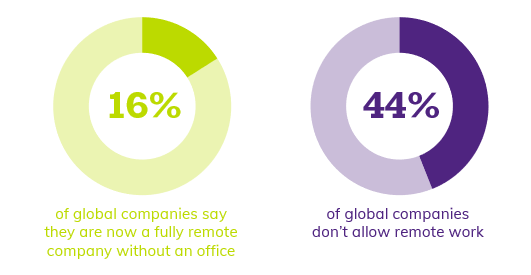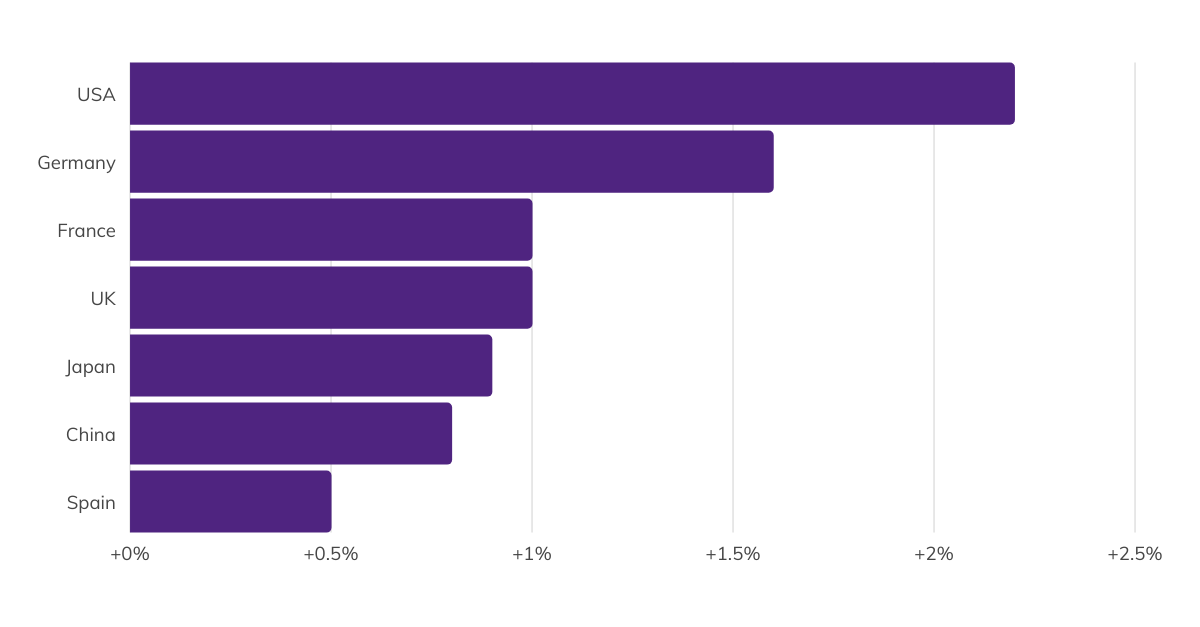2020 was the year of lockdowns, furloughs and concerns about unemployment. So it’s hardly surprising that for many employees, their focus wasn’t on changing jobs.
With the success of the rollout of the vaccine and many countries beginning to ease restrictions, will 2021 see a rise in the candidate mobility as people start to consider changing jobs?
In January 2020, reports suggested that half of employees were considering a new job. Then the pandemic hit.
The whole world of work changed, furlough came in to protect people’s roles and unemployment increased. Many people’s focus shifted to adapting to a new way of working and placing plans to change jobs on hold. Research by Deloitte showed that once the pandemic hit, 80% of people said they would be staying in their role. That compares to 35% of people in 2011.
Data suggests that people continue to be cautious. A quarter of people said they would be considering changing jobs in 2021. There are still concerns about making a move, with 70% of people citing lack of practical support and concerns about the UK economy. However, the latest data from the UK shows the number of resignations, often seen as an indicator of candidate confidence, is up to almost the same level as pre-pandemic.
The good news for job seekers is that the market is picking up. Data shows that there are currently more than 1 million jobs available in the UK, the highest number since November 2019. The sectors with the highest levels of recruitment are IT, construction, engineering, teaching, logistics and warehouse work.
There are many different reasons for employees to look for new roles, but the following are particularly pertinent at the current time:
For those people who were thinking about moving in 2020, the desire may still be there and the increase in availability of roles may lead to an increase in candidate mobility.
However, it is also true that for some employees the way their company stepped up during the pandemic may influence their decision to leave. If they felt supported and the company communicated well and handled challenges in a positive way, some people may reconsider their thoughts about moving on. A company’s approach has a big impact on employer brand, both for employees and candidates looking to join the business.
For many people, working from home has given them more flexibility and opportunities. And while data shows that it’s not all positive, many people are looking to continue to work remotely, either fully or for part of their working week. While many people appreciate the advantages of remote work, some are keen to return to the office and looking forward to face-to-face conversations with colleagues.

Source: Owl Labs
For businesses, it’s all about being able to match work location and people’s preferences. Employees may look to move on if their preferred way of working is not supported by their employer. Data showed that 46% of people would look for another role if they could not work remotely.
The increase in remote working has another impact by opening up new opportunities for employees. No longer restricted by geography, people can now look outside their local area for remote roles, which may make it easier for employees to move on.
The pandemic has impacted the percentage of people changing occupations. UK government figures show that 6.1% of people changed occupations in April to June 2020, vs 5.7% during January to June 2019. Of those switching jobs, more than 50% changed industry.
Some of these changes were forced on people due to lack of stability in their industry. Other people used the pandemic to review their career and make changes to support their needs and values.
Research by McKinsey suggests that the pandemic may have a long-term impact too, with occupation switching on the rise as a result. Their data shows an increase in most countries as a direct result of COVID-19, with an uplift in employees switching occupations by 2030:

Given the fact that this year may see more people leave their employer, it’s essential that companies are prepared. Now is a good time to ensure that your company has a robust succession plan, not only for senior roles but all jobs which are critical to business success.
If you need support with this, our free succession planning guide offers advice on the best approach and how to manage the process.
With a potential rise in the number of workers looking to move jobs in 2021, businesses need to be prepared.
Our succession planning guide helps you evaluate critical roles and how to prepare for the future.
Our guide takes an in-depth look at the best approach to prepare your business for the future.
© Talent Insight Group 2025